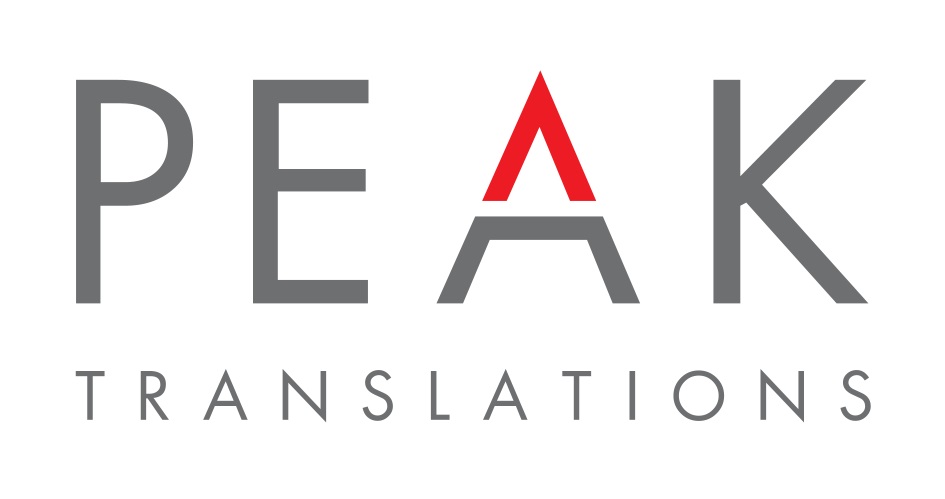 Add My Company
Add My Company
Sign In

Here at Peak Translations, we are forensic in our translation work. It is our job to make your messaging as clear as possible for your target audience. That requires a contextual understanding of every word, and the work is often painstaking.
There are, however, some checks you can undertake yourself before passing on your copy for translation, which will save time, money and energy further down the line.
Here’s our top tips on getting your original document ‘translation ready’:
1. Ensure your meaning is understood
Of course, you need to remove any jargon. The meaning might be perfectly clear to those who work in your organisation or in a particular field, but that might not be the case for all readers. Where jargon or complex terms cannot be avoided, it is useful to provide your translator with a glossary.
Be aware of any idioms or word play in your copy. Puns are a very popular technique in advertising copy but do not translate well. Consider this headline, “Do’nut miss this offer” for a US donut company. Similarly, some headlines work because they rhyme, for example “An affection for confection”. The impact is, quite simply, lost in translation.
Ambiguous phrases also need to be avoided. “The procedure should be prepared for the patient lying down.” Who should be lying down – the medical professional or the patient?
One of the simplest ways to assess whether your copy can be understood, is to pass it to a disinterested party (someone who knows little about your business or industry). Does it convey what you want it to? Is your reader clear on the action you want them to take?
2. Pay attention to customs
Customs may be well understood by one nation, but could other nationalities find them ambiguous? The term ‘cream tea’ may be obvious in the UK as afternoon tea and scones, but would foreign visitors be familiar with the custom?
Even customs that are widely understood may need attention. For example, Mother’s Day as a celebration requires no explanation, but when it takes place does since it takes place on different dates in different countries (fourth Sunday of Lent in the UK; second Sunday in May in Italy; and last Sunday in May in France).
3. Check your images
You might consider that the images you use are there simply to support the text; however, in some languages, they will also change the text itself.
Let us take the example of ‘the nurse’. In English, the gender of the individual in question does not change the word. In German, on the other hand, the nurse will either be ‘der Krankenpfleger’ (where male) or ‘die Krankenpflegerin’ (where female). If the accompanying image depicts a female nurse, any reference to ‘der Krankenpfleger’ may look a little odd! For that reason, we always ask for sight of the original document in its entirety – text, images and graphics – so we better understand the overall context.
The images themselves might also need to change if the object differs depending on country. Take a computer keyboard which will include the letters ñ and ç when bought in Spain.
Images can be very powerful in arousing certain emotions. If you want your reader to feel nostalgia, you may choose a red letterbox for a UK audience but this is unlikely to evoke the same feelings in, say, a Spanish audience, where a yellow letterbox would be more appropriate.
4. Consider any differences in words and sentence structure
Very often, languages do not translate word for word. We may say in English, “I am hot” but the German translation is “Mir ist heiß” (I am feeling hot) (rather than “Ich bin heiß” which has an altogether more raunchy meaning!). Similarly, some languages may have a wider breadth of words to describe an object. Snow is a much quoted example: in Inuit languages, there are over 40 different words to describe this weather event.
Sentence structure is as important as words. A customer survey in English might pose the question, ‘How well does this approach set the product apart?’ The respondent might be offered a scale of responses from ‘Very well’ to ‘Not very well’, and everything in between. The appropriate translation of this question into French would be, ‘Does this approach set the product apart well?’ Response options would, therefore, not be ‘Tres bien’ and so on; rather ‘Oui’, ‘Non’ or ‘Je ne sais pas’. If the response options change, so too will capturing the responses in any analysis.
Of course, only native speakers are expected to have such a detailed understanding of the target language; not the people who are commissioning the translation. Nevertheless, it is worth knowing that your translator may suggest adjusting the question in the original text to save additional work at a later stage.
5. Make it clear which copy requires translation
Brand names of course do not need to be translated (unless the brand name itself is different depending on the country) but what about their straplines? Take the well-known example of Nike’s ‘Just Do It’ slogan. The translator will need to know whether your choice is to translate it, or to leave it in English.
Thought too needs to be given to trademarks and registered product names. It should be clearly indicated in the original text which part of the product name is trademarked or registered and therefore needs to remain in English. Similarly, in a catalogue (particularly one that has been added to over time), the (fictional) product name of ‘Tridoxe Spare Parts’ may feature in a number of different ways, e.g. the product name on its own; followed by the ™ symbol after the word ‘Tridoxe’; or containing a ® mark after the whole name. This lack of consistency causes confusion for the translator.
6. Make sure you provide the final version
If your document has passed by a number of colleagues for review, it is worth casting a final eye over the contents. If new text has been added, you might refer to your company in the singular but a colleague might choose the plural. There may well be a difference in spelling, depending on whether an individual has their spell check set to UK English or US English. It is important to ensure consistency.
A final check should be taken after any Track Changes to ensure such matters of consistency. Not only to address any queries raised by colleagues as comments but to also make sure there are no unintentional errors in terms of additional or missing spacing.
Where deadlines are tight, we are often asked if we can make a start on the draft version ahead of the final version being signed off. In actual fact, this creates rather than saves work since we may well be translating copy that the client later decides to change, or remove entirely.
It is worth pointing out we accept pretty much any kind of file format so there is no need to copy and paste your copy into Word format, and it allows us to see the text in the full context of supporting images and graphics.
Paying attention to the areas above at the earliest stages will help your translation project run smoother than ever. Click below to download our checklist to ensure all your copy is ‘translation ready.’
For more information on How to save time, money and energy when commissioning your translations talk to Peak Translations Ltd
Enquire Now
List your company on FindTheNeedle.

